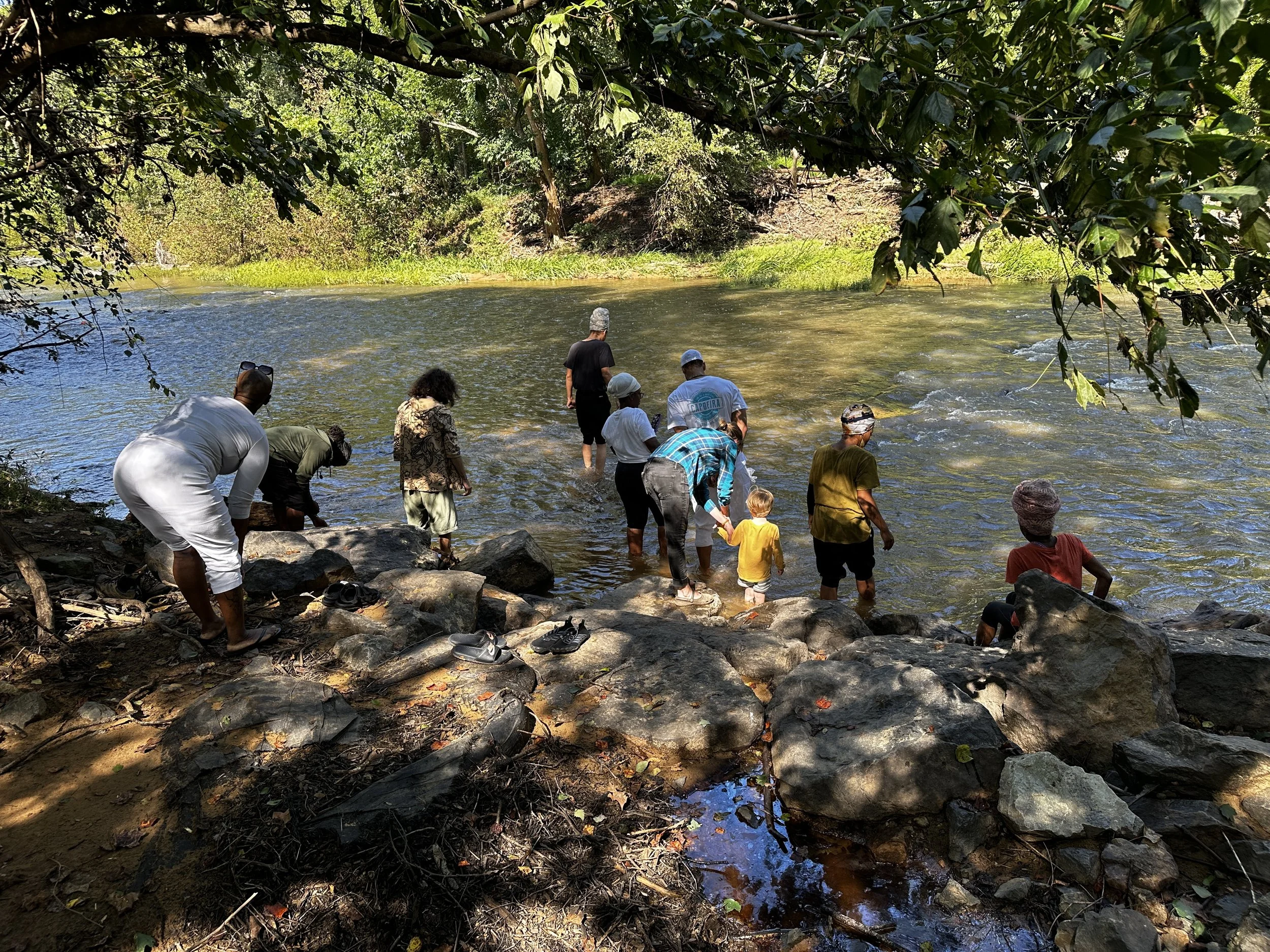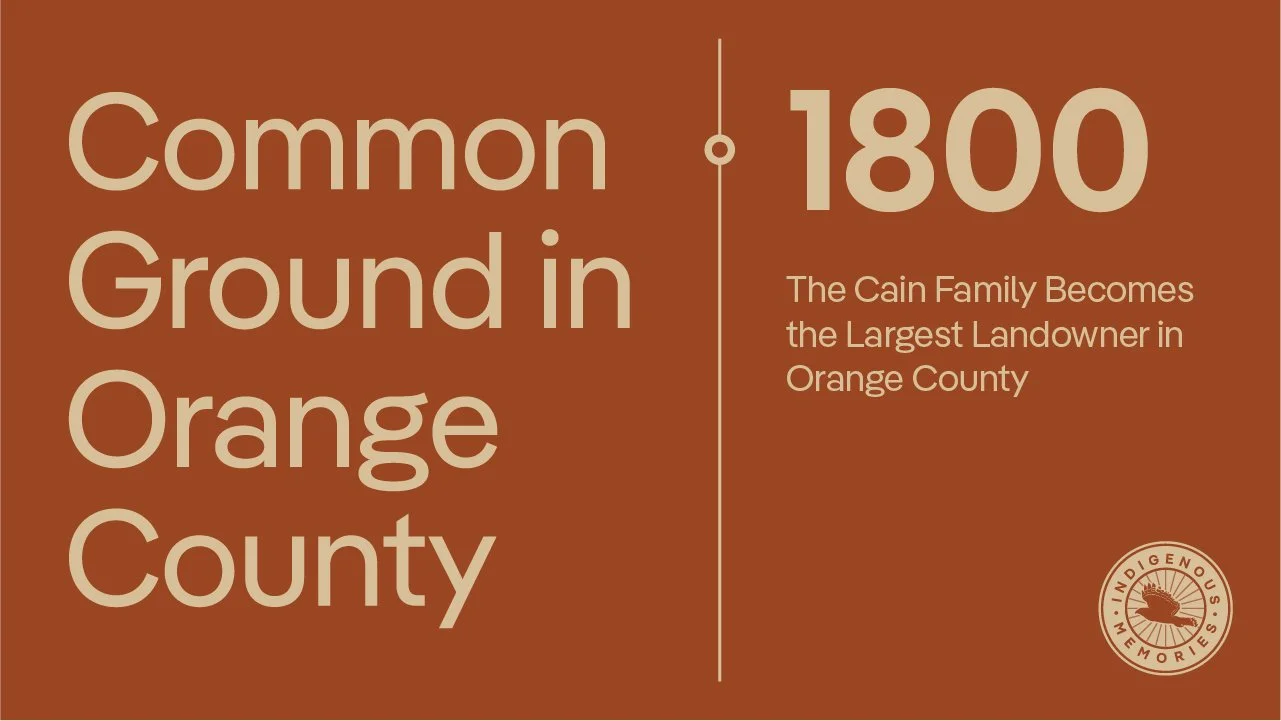
1800
THE CAIN FAMILY BECOMES THE LARGEST LANDOWNER IN ORANGE COUNTY
While the origins of Hardscrabble Plantation on St. Mary's Road trace back to William and Elizabeth Clenny, it was the Cain family who shaped the plantation's destiny and built their fortune on the forced labor of enslaved people.
The Cains arrived in Orange County about 1752, and John Cain purchased about 220 acres from the Clenny family. This initial acquisition formed the nucleus of a vast estate that would eventually encompass over 4,400 acres, with the Eno River bisecting the property. It is important to note that the Eno and Occaneechi people inhabited this area prior to European colonization.
The Cains, prominent figures in the area, were deeply involved in the economic and political life of the county. They cultivated various crops, including tobacco, oats, wheat, and Indian corn, operated mills along the Little River, and, like many large landowners of the time, participated in the trade of enslaved individuals.
After John Cain died in 1816, the property transferred to his brother, William, who was one of Orange County's largest landowners, a state university donor, and a state legislature member. He retained the property until his death in 1834, when his son, William Cain II, inherited the property.
While records document the Cains' land ownership and business activities, the lives of the enslaved people at Hardscrabble remain largely untold.
The 1830 census recorded 90 enslaved individuals on the plantation, but burial grounds on the property suggest a much larger number of enslaved people, said Beverly Scarlett, cofounder of Indigenous Memories.
“Slaves are being bought and then sold, so you only have a few numbers when the census taker comes around because you have to pay taxes on these people,” Scarlett said. “They are property, so they're taxable."
The burial ground on the property, containing over 200 graves and still being surveyed, underscores the significant presence of enslaved people whose stories have yet to be fully uncovered.
The most detailed glimpse into life at Hardscrabble comes from a WPA interview with Sarah de Broglie, who was enslaved there as a child. Her recollections paint a stark portrait of the realities of slavery.
She described being separated from her parents to live in the "big house," witnessing the violence of soldiers from both sides during the Civil War, and hearing accounts of enslaved people being killed for expressing a desire for freedom. De Broglie's testimony provides a crucial personal perspective on the trauma and oppression inherent in the system of slavery.
“A lot of the slave descendants don't want to talk about it,” Scarlett said. “A lot of the Indigenous people don't talk about their history because you don't know where it is going to go, how people will use it. But this is important.”
Featuring Indigenous Memories Co-Founder, Beverly Scarlet


